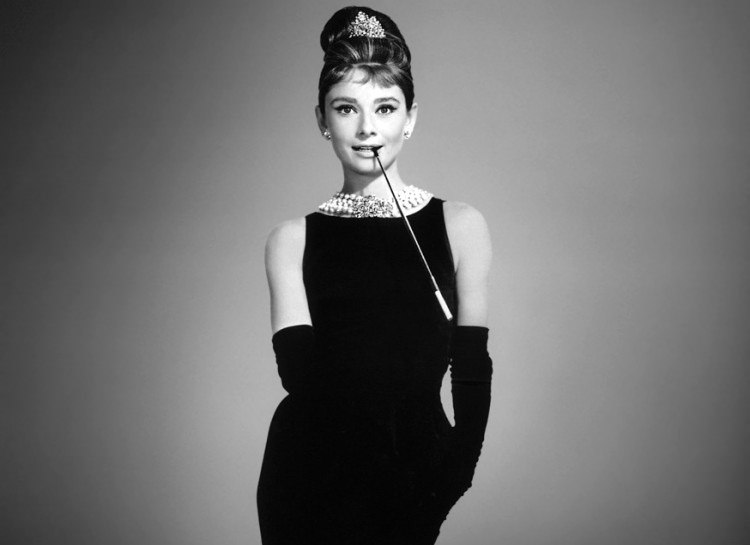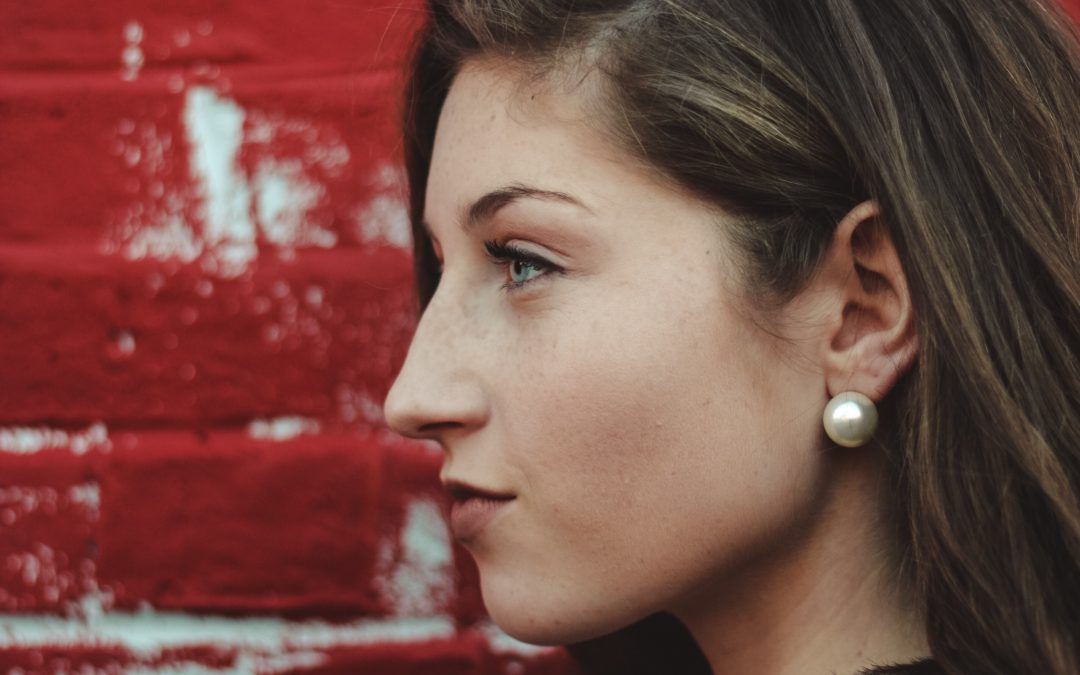There are three things every woman needs: A Little Black Dress, Sentimental Pearls, and Red Lipstick! Even if she doesn’t use each of these items all the time, there will ALWAYS be a need for each one individually, or put together for a timeless, classic, and elegant look appropriate for every occasion. Once lusted after by kings and warriors, associated with purity and innocence early on, sewn into the clothes and hair of nobility, and after time, associated with grandmotherly conservatism. Now it is embraced by all ages and styles – in art and fashion. What an illustrious history!
Throughout the centuries, the world’s oldest gem has represented status and wealth and was only available to the very wealthy. Then, with the introduction of cultured and imitation pearls, the “everyday woman” had access to the Royal Table of Gems. Pearls could now be added to her repertoire of fashion thanks to a little ingenuity.
Coco Chanel helped increase the acceptance of imitation pearls into the fashion world, and with it, pearls became an icon of feminity, grace, tradition, and beauty. Suddenly, pearls became perfectly acceptable for every age and every moment; always appropriate.
That is certainly a long way from the days when it was against the law to even wear a pearl unless you were of royal blood! Yet with the accessibility of pearl jewelry, the status and draw of a simple strand of white, shimmery beads adorning a delicate neck or ears never lost it value.

THE QUEEN OF GEMS
What comes to mind when you think of the pearl? Most of us have images of Jackie Kennedy, Audrey Hepburn, or Grace Kelly flash across our minds. Pearls are synonymous with grace, beauty, class, and style. Some things never change. Pearls are foundational in fashion and synonymous with tradition.
But how did we get here? What is the history of the pearl?
“A pearl is a living jewel.” – Kikichi Mikimoto
Pearls are the world’s oldest gem. Believed to have been used by the earliest cultures that lived by the sea. The only gemstone formed by a living organism. Natural pearls are the rarest of gems. They are rare, unique, and mysterious. A pearl truly represents “beauty from ashes” as the oyster turns an unwanted invader or irritant, from which it needs to protect itself, into a lovely and precious gift.
Pearls from wild oysters of the deep seas are truly remarkable and rare.
The lust for pearls increased so much over the centuries that the naturally-occurring beds dwindled to near extinction; caused by over-harvesting. Now, naturally occurring pearls from wild oysters are extremely rare; even rarer are Conch pearls and Abalone pearls.
PEARL HISTORY
We know pearls were presented as gifts to Chinese royalty as early as 2300 BC. So precious were pearls that Julius Caesar made it a law that only royalty could adorn this sought after gem.
Cleopatra was said to have crushed an expensive pearl earring, the equivalent of 30,000 pounds of gold, dissolved it into a glass of wine vinegar and drank it to win a bet against Marc Antony. (That’s someone who doesn’t like to lose a bet!)
In Ancient Rome, the pearl was the ultimate status symbol.
Asian cultures viewed it as a symbol of purity.
In the Dark Ages, knights adorned pearls in battle as they imagined protective powers associated with the luminescent gem.
Pearls were a symbol of beauty and represented love.
Venus was believed by the Romans to have come from an oyster, as was Aphrodite.
Pearls also served as currency in ancient history.
As the supply of natural pearls dwindled and their value increased, alternatives for the hard-to-find pearl were sought. In the 17th century, a rosary manufacturer by the name of M. Jacquin, created imitation pearls with glass beads coated in fish essence, the by-product of soaking fish scales in water. (Can you imagine having the job of scaling tens of thousands of fish?!)
CULTURED PEARLS
In the 19th century, a Japanese noodle maker, Kokichi Mikimoto, is credited with developing the cultured pearl industry. Working with two other Japanese men, they discovered it was possible to insert certain foreign substances into the oyster, thereby helping nature along in the development of pearls. Until this point, the formation of a pearl was dependent upon the accidental introduction of a foreign invader into the mollusk. Instead of waiting for chance, Mikimoto – through trial and error – discovered the best way to introduce a substance, and what substances served as a good nucleus, that would eventually result in beautifully-formed and lustrous pearls.
TIP: Cultured (cultivated) pearls ARE natural pearls and represent the vast majority of pearls on the market. Wild pearls are EXTREMELY rare and expensive. There are freshwater cultured pearls and saltwater cultured pearls. The pearls from Mikimoto’s farms in Japan are called Akoya pearls. The traditional white, round pearls in a strand are most likely Akoya pearls.
TYPES OF PEARLS
Pearls vary in size, color, luster, and shape based on where they are cultivated and the conditions in which the oysters live. Everything is dependent on the food they eat, the condition of the water, the temperature of the seas, and weather conditions.
Black pearls are Tahitian Pearls.
Gold pearls come from the South Seas and are considered the “top of the line” in pearls.
The pearls are cultivated in oyster farms along the coasts; hanging in nets out in the open waters. Depending on the type of oyster and natural conditions, it can take anywhere from 10 months to 5 years to complete the entire process.
Imitation pearls usually start with a glass bead or other base and then are dipped into a special “pearl-essence” bath composed of a variety of crushed pearls or shells or a variety of other composites to give the finished product the look and sheen of a real pearl. Majorica pearls are the best-known imitation pearls and are of top quality, and are manufactured on the island of Mallorca off of Spain.
TAKING CARE OF PEARLS
A cultured pearl is a delicate and precious part of your jewelry collection. Many sentimental pearls are family heirlooms passed down through generations. With proper care, they will continue to last for many more. Here are a few suggestions for keeping your pearls looking their best.
- Limit exposure to anything acidic. (i.e. perfumes, acidic foods, pesticides, etc)
- Put on your pearls as the VERY last thing you do. After hairsprays, cosmetics, and perfumes.
- Due to their delicate nature, wear pearl rings and bracelets only for special occasions. They can easily scratch or become damaged.
- Wipe your jewelry gently, with a soft cloth, after EACH wear.
- Only use mineral or distilled water to rinse pearls. Tap water has harsh chemicals that can damage your jewelry.
- Store them separate from other jewelry since they scratch easily.
- Avoid very dry conditions. Place a small container of water nearby if you will store them in a vault or other dry area.
- They are best stored in a soft bag such as velvet or silk bag.
- Never use a plastic bag to store your pearls.
- Avoid sunlight.
- Restring necklaces every 3 -5 years.
- Pearls dehydrate over time. Make sure they get air and moisture (but not wet). Wear them often!
There isn’t anything more traditional and sentimental than pearls. They make great gifts for young girls and mature women alike. Whether it is a confirmation, graduation, wedding, anniversary, or other milestone, pearls are always appropriate for every occasion!

We’d love to help you find that perfect strand of pearls or create a custom piece. We offer customized services in Colorado Springs. Located in downtown at 111 N. Tejon St. 80904. Or give us a call at 719-232-8122

